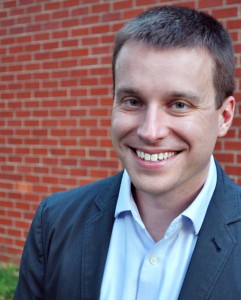Article first appeared online October 8, 2015
Marginal Pricing and Student Investment in Higher Education
Steven Hemelt, Assistant Professor, University of North Carolina at Chapel Hill, and Kevin Stange, Assistant Professor, University of Michigan
What was the genesis of the idea for your research/paper?
Increasing time to degree, especially for low-income and traditionally underrepresented students, coupled with growing gaps in college completion by family income has made us (along with much of the research community) interested in identifying mechanisms that influence students’ success in college. While there is a substantial amount of research on students’ responsiveness to overall price, there is little work that explores how students react to specific facets of colleges’ pricing policies.
One example is the “marginal price,” or the amount charged by colleges for each additional credit of coursework. Many colleges have reduced the marginal price in an attempt to get students to graduate faster. We realized our interest in such pricing policies matched well with variation across the 4-year public sector of higher education in Michigan. Michigan has no centralized governing structure for its system of public institutions and therefore considerable variation in pricing policies exists across institutions. Importantly, we were also able to gain access to unique transcript-level administrative data on all students, thanks to an ongoing research partnership between the State of Michigan and the University of Michigan. This combination of interest in understudied pricing structures, good data, and a unique policy environment in which to test related hypotheses drove our paper.
What is the main conclusion that becomes evident from your research? (Or, what is your main takeaway?)
We find that a charging students no additional tuition for additional courses – referred to as “flat pricing” – induces a modest share of students (i.e., 7 percent) to attempt up to one additional class (i.e., 3 credits) but also increases withdrawals and lowers course performance. The analysis also suggests minimal impacts on credits earned and the likelihood of meeting “on-time” benchmarks toward college completion. The implication is that reductions to marginal price will have little impact on students’ likelihood of graduating on-time.
What are some of the more interesting or surprising findings/conclusions did you find in the process of bringing this together?
We were somewhat surprised that there was essentially no prior work on the subject, as these differences in pricing practice are long-standing at many universities. We were also a bit surprised at the consistency of the negative impacts of flat pricing on student performance. We initially focused on overall effects on course-taking, but then looked at course performance in order to understand differences we were finding between credits attempted and credits earned. Influencing some students to take more courses than they could handle is certainly one consequence of flat-pricing that colleges did not anticipate.
Click here to view article
Authors' Bios

Steve Hemelt is an Assistant Professor in the Department of Public Policy at the University of North Carolina at Chapel Hill. Hemelt is an Affiliated Researcher with the Education Policy Initiative at the University of Michigan and the Education Policy Initiative at Carolina. His primary fields of interest are the economics of education, education policy, labor economics, and program evaluation. Hemelt teaches courses on policy analysis and research design.
His current research focuses on transitions from high school to college and the workforce, the role of costs in shaping students’ decisions about higher education, and differentiated school accountability. Hemelt received his B.A. and M.A. in Economics and his Ph.D. in public policy from the University of Maryland, Baltimore County.

Kevin Stange is an Assistant Professor of Public Policy at the University of Michigan where he teaches graduate courses in higher education policy, economics, and quantitative methods. He is also a Faculty Research Fellow at the National Bureau of Economic Research and Faculty Affiliate of the Center for the Study of Higher and Postsecondary Education and the Education Policy Initiative, both at University of Michigan. His research lies broadly in empirical labor and public economics, with a focus on education and health care. His prior research includes studies of college enrollment and persistence, the effect of resources and peers on community college students, the importance of amenities in college choice, and the effects of differential pricing and flat pricing on major choice and student credit load. He is currently conducting research on the effects of price deregulation in higher education and the importance of school capital investment in K12. He has also researched changes in the health care workforce and occupational licensing. His research has been published in numerous economics, education, and policy academic journals and featured in popular outlets such as Time, Wall Street Journal, Inside Higher Ed, Chronicle of Higher Ed, Atlantic Monthly, and the Freakonomics blog. He has received research support from the U.S. Department of Education, the Spencer Foundation, the WT Grant Foundation, the Robert Wood Johnson Foundation, and the Russell Sage Foundation. Prior to joining the Ford School, he was a Robert Wood Johnson Scholar in Health Policy Research at the University of Michigan. He received undergraduate degrees in Mechanical Engineering and Economics from MIT and his Ph.D. in Economics from the University of California, Berkeley.